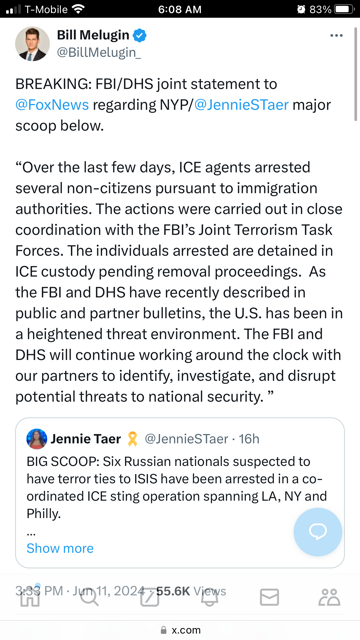Former President Trump has said often, it is not just me they are after, they are really after you and I am in the way. It is quite true, but add intrepid investigative journalists as well and it all began under the Obama administration.
Anyone remember when the Obama Department of Justice went after several Associated Press reporters? Or how about all the way to the Biden administration as noted here:
WASHINGTON (AP) — The Justice Department said Saturday that it no longer will secretly obtain reporters’ records during leak investigations, a policy shift that abandons a practice decried by news organizations and press freedom groups.
The reversal follows a pledge last month by President Joe Biden, who said it was “simply, simply wrong” to seize journalists’ records and that he would not permit the Justice Department to continue the practice. Though Biden’s comments in an interview were not immediately accompanied by any change in policy, a pair of statements from the White House and Justice Department on Saturday signaled an official turnabout from an investigative tactic that has persisted for years.
Democratic and Republican administrations alike have used subpoenas and court orders to obtain journalists’ records in an effort to identify sources who have revealed classified information. But the practice had received renewed scrutiny over the past month as Justice Department officials alerted reporters at three news organizations — The Washington Post, CNN and The New York Times — that their phone records had been obtained in the final year of the Trump administration.
The latest revelation came Friday night when the Times reported the existence of a gag order that had barred the newspaper from revealing a secret court fight over efforts to obtain the email records of four reporters. That tussle had begun during the Trump administration but had persisted under the Biden Justice Department, which ultimately moved to withdraw the gag order.
Let’s go back to the days of Fast and Furious or Benghazi shall we? Just in the last week, former CBS investigative correspondent of 21 years Sharyl Attkisson gave an detailed update to her case against the Department of Justice and the FBI as initially explained in her book titled Stonewalled.
In full disclosure, I read that book back and the chill still runs through my veins. After listening to her most recent podcast explanation, the takeaway is how all of government is still being used to stonewall the case not only with her but now too Catherine Herridge, just recently fired from CBS for refusing to reveal her sources for a story. so much for a free press. So, please take the time to hear the Attkisson podcast to fully grasp the government dragnet and then understand how it all flows down to we the people…..including we the people.
Now consider just what these deep state ghost operatives have been plotting and planning going forward. Use your imagination as Miss Sharyl has provided the mission template and tactics.
We are now living in a Stasi environment an additional form of terror…the war on information and truth.







